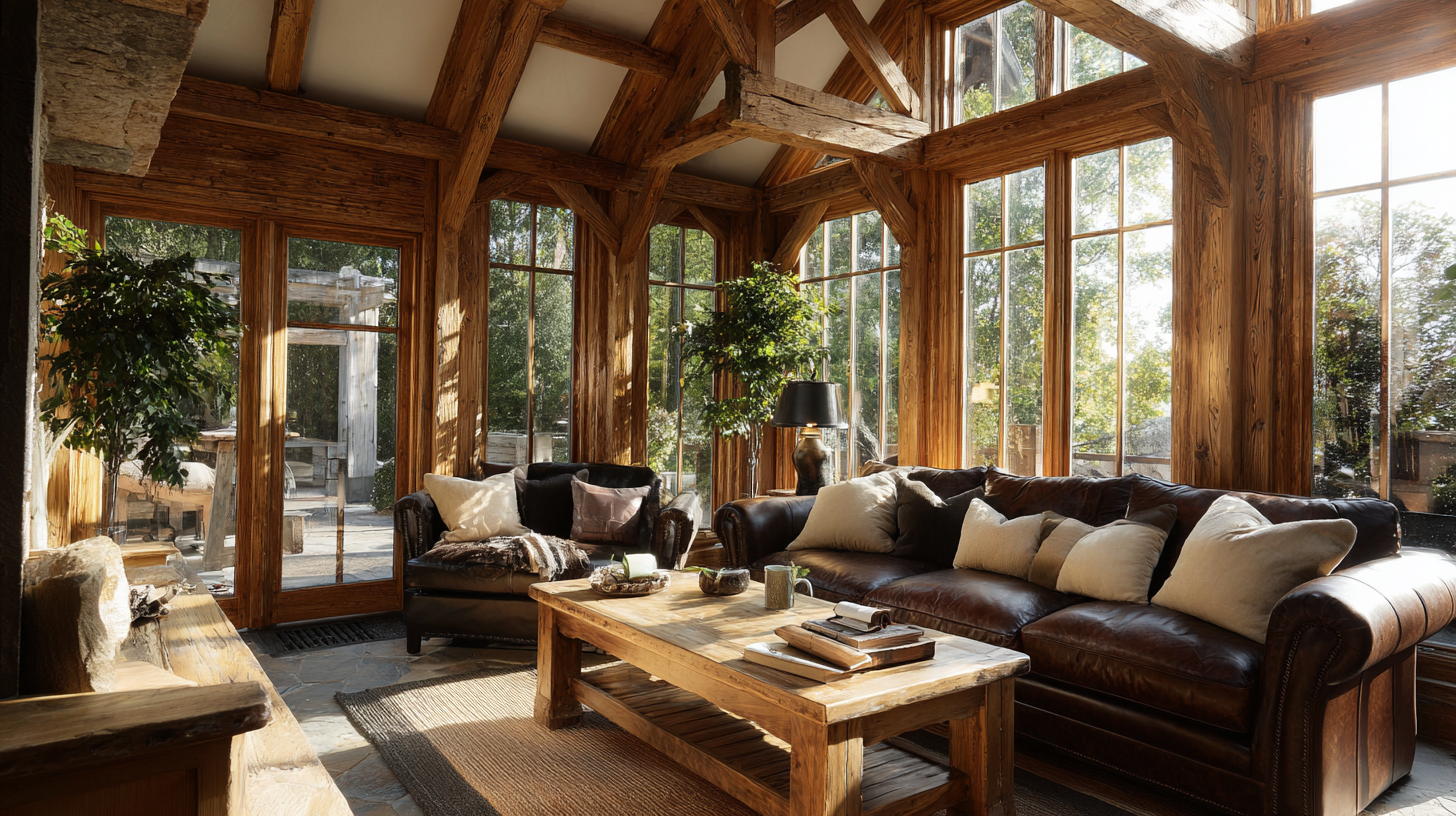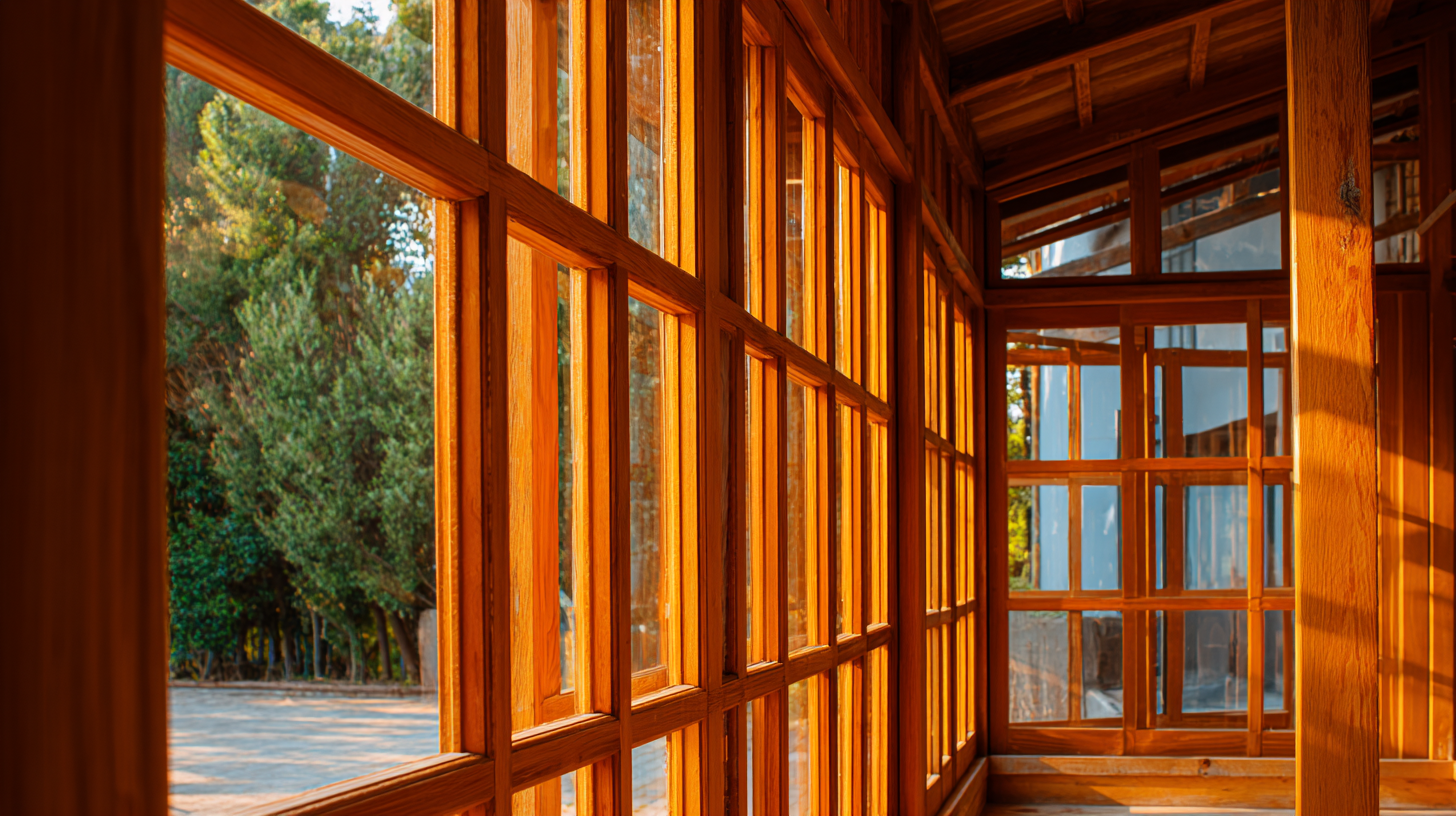In an era where sustainability and quality are paramount, sourcing wood windows that align with environmentally responsible practices is more critical than ever. According to a report by the Forest Stewardship Council (FSC), the demand for sustainably sourced wood products has surged by over 50% in the past decade, reflecting a growing recognition of their environmental impact. Additionally, the Global Industry Analysts project that the wood windows market will reach $12 billion by 2025, driven by increased consumer awareness and preservation of natural resources. This emphasizes not only the rising popularity of wood windows as an energy-efficient choice but also the importance of partnering with top-ranking manufacturing factories known for their commitment to quality and sustainability. As we explore the top strategies for sourcing the best wood windows, it is essential to focus on innovative practices that ensure both superior craftsmanship and environmental stewardship.

When sourcing quality wood windows, it’s essential to focus on certain key characteristics that ensure both aesthetic appeal and sustainability. First and foremost, consider the type of wood used. Opt for hardwoods known for their strength and durability, such as oak or mahogany. These materials not only provide excellent insulation but also tend to last longer, reducing the need for replacements over time. Additionally, look for windows that have been treated with eco-friendly finishes, as these can enhance weather resistance while minimizing environmental impact.
Another critical feature to assess is the window construction method. Joints that are meticulously crafted or even reinforced can significantly improve the structural integrity of the window, preventing issues like warping over time. Furthermore, ensure that the wood windows are sourced from sustainable timber operations. Certifications like FSC (Forest Stewardship Council) indicate that the wood is harvested responsibly, promoting environmental stewardship. By prioritizing these characteristics, you can confidently select wood windows that not only elevate your home’s design but also align with sustainable practices.
| Characteristic | Description | Importance for Quality | Sustainability Factor |
|---|---|---|---|
| Wood Species | Different woods provide various aesthetic and durability features. | Higher durability and aesthetic value enhance overall quality. | Select sustainably sourced woods like FSC-certified options. |
| Joinery Techniques | Methods used to join window parts can affect strength and performance. | Mortise and tenon joints provide superior longevity. | Traditional joinery often uses less glue, favoring natural materials. |
| Finish Type | Finishing affects appearance and protection from elements. | Quality finishes extend lifespan and reduce maintenance. | Eco-friendly finishes minimize environmental impact. |
| Energy Efficiency | Windows influence heating and cooling needs of a building. | High-efficiency windows reduce energy costs and improve comfort. | Promotes sustainable living by lowering energy consumption. |
| Warranty and Durability | Duration and coverage of warranty provide insights into product reliability. | Long warranties indicate confidence in product durability. | Durable products lead to less waste and resource consumption. |
When sourcing wood windows, evaluating the sustainability practices of manufacturers is crucial to ensure both environmental responsibility and product quality. According to a report by the Forest Stewardship Council (FSC), approximately 80% of consumers prefer products that are certified as sustainably sourced, highlighting the growing demand for transparency in sourcing practices. Manufacturers that utilize FSC-certified wood demonstrate a commitment to responsible forestry, which includes adhering to strict guidelines that protect biodiversity, soil quality, and carbon sequestration.

Another key factor in assessing sustainability is the life cycle impacts of wood windows. The American Wood Council indicates that sustainably sourced wood has a low carbon footprint compared to synthetic materials, making it a viable option for eco-conscious builders and renovators. Additionally, many leading manufacturers are adopting innovative practices such as using reclaimed wood or implementing energy-efficient manufacturing processes. By prioritizing manufacturers who emphasize sustainability, consumers not only contribute to environmental conservation but also invest in high-quality products that stand the test of time.
 When selecting wood windows, considering different wood species is crucial for achieving both durability and aesthetic appeal. Hardwoods like oak and maple offer exceptional strength and resistance to wear, making them ideal for windows that endure harsh weather conditions. On the other hand, softer woods such as pine and cedar not only provide a warm, rustic look but also offer good insulation properties, enhancing the energy efficiency of your home.
When selecting wood windows, considering different wood species is crucial for achieving both durability and aesthetic appeal. Hardwoods like oak and maple offer exceptional strength and resistance to wear, making them ideal for windows that endure harsh weather conditions. On the other hand, softer woods such as pine and cedar not only provide a warm, rustic look but also offer good insulation properties, enhancing the energy efficiency of your home.
Tip: Look for wood that has been sustainably sourced to ensure your windows are environmentally friendly. Certifications like FSC (Forest Stewardship Council) can guide you to responsibly harvested materials.
Another important factor is the finish you choose, as it can greatly influence both the longevity of the wood and its appearance. For instance, a high-quality sealant can protect softer woods from moisture, preventing warping and decay. Moreover, paint or stain can enhance the natural beauty of hardwoods while also providing a layer of protection.
Tip: Consider the color and grain patterns of different species to match your home's interior and exterior design. Selecting wood that complements your aesthetic not only adds to the visual appeal but can also increase the overall value of your property.
When sourcing wood windows with energy efficiency in mind, examining the heat transfer coefficients for the envelope surfaces of multi-family houses is critical. These coefficients indicate how well a building regulates heat loss or gain, which directly impacts energy consumption. For instance, the design parameter analysis for low-energy residential buildings suggests that optimizing heat transfer can lead to significant cost savings and reduce overall energy demands. As noted in various industry reports, enhancing insulation and selecting windows with low U-values can enhance thermal performance, allowing homeowners to meet critical energy performance benchmarks.
In the context of sustainability, the life cycle energy analysis of residential wooden buildings compares favorably against traditional materials like concrete and steel. Approximately 40% of global energy consumption stems from the construction sector, highlighting the urgency of adopting energy-efficient solutions. Implementing energy-efficient retrofit measures not only cuts operational costs but also contributes to greater environmental stewardship. As cities increasingly prioritize sustainable developments, wood windows that offer high energy performance ratings can help ensure compliance with evolving building standards while supporting the industry's transition toward more responsible resource use.
When sourcing wood windows, striking a balance between quality and sustainability is crucial. As the demand for sustainable building materials rises, understanding the cost implications of this dual focus becomes vital for manufacturers and consumers alike. High-quality wood windows not only enhance the aesthetic appeal and durability of a property but also align with eco-friendly practices. Sustainable sourcing involves selecting timber from well-managed forests and promoting responsible harvesting methods, which can sometimes lead to higher initial costs. However, the longevity and reduced environmental impact of these products often justify the investment.
Considering the growing trend among consumers, especially Millennials, who prioritize sustainability in their purchasing decisions, businesses have an opportunity to differentiate themselves through eco-friendly offerings. It's essential to communicate the benefits of wood windows that are both high in quality and sustainably sourced. The conversation around the cost comparison between quality and sustainability can help bridge the gap; emphasizing that the long-term savings from energy efficiency and reduced maintenance can significantly outweigh the upfront costs. As we continue to explore timber's role in construction, embracing sustainable practices is not only responsible but also aligns with the expectations of the modern consumer.




